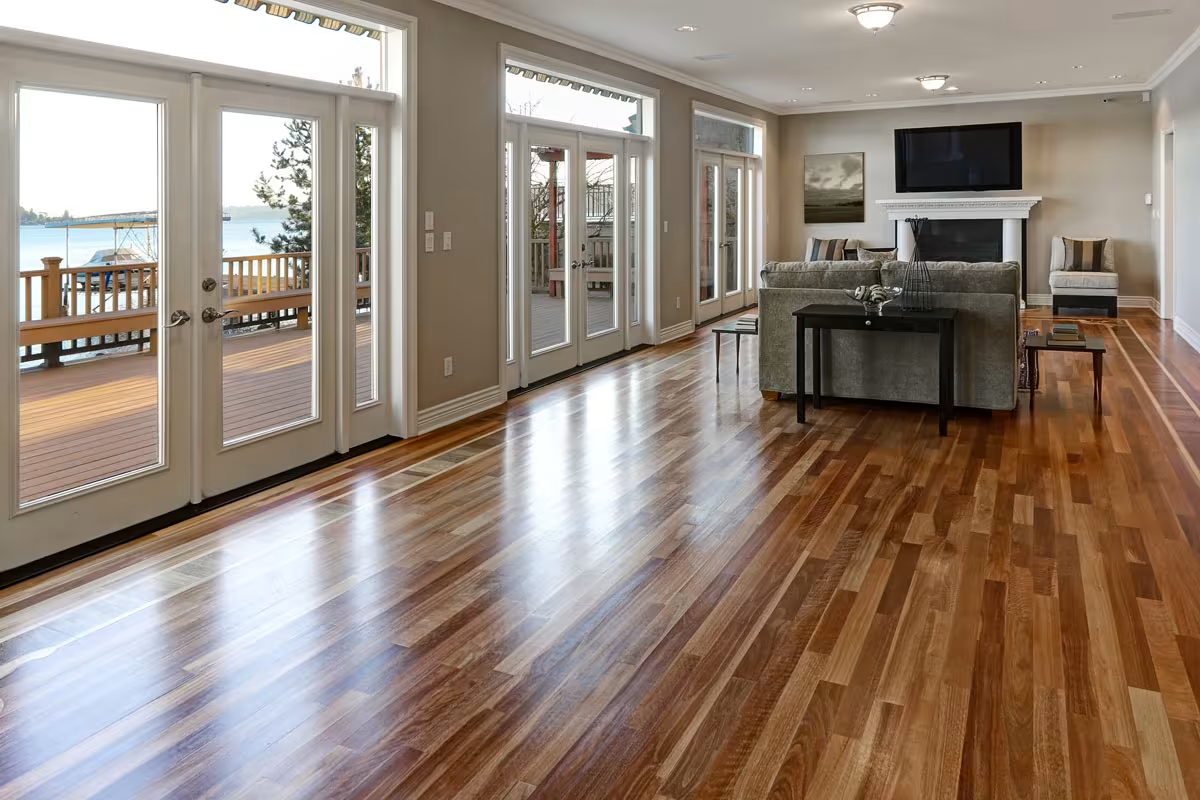Wood floors look and feel great but they need to be cleaned often to remain in good condition. Clean hardwoods using a soft brush attachment with your vacuum, and mop on occasion with a slightly damp cloth that has been dipped into a pH neutral cleaner appropriate for use with hardwoods.
Vacuum Regularly
Old wood floors can show dust and dirt that will scratch a hardwood floor and leave lasting scratches and a rough look. A cleaner with a soft brush attachment that was designed for hardwood floors and furniture pads on any pieces of furniture that are frequently used are helpful so that you’re not dragging them across your floor. If your floor varnish is peeling and your floor showing bare wood, Old English Scratch Cover will hide gouges without having to refinish your floor. Follow the directions on the label. Usually extreme humidity is an issue for wood flooring – if the conditions are between 30 per cent and 50 per cent humidity, then this is an acceptable humidity level for the job and the wood floor will adapt better to weather changes and avoid moving to the extent that it will degrade over time.
Clean the Surface
Old wooden floors are easily contaminated by dirt from people walking in from outside, and by grime that then gets stuck to the surfaces, sometimes between the boards and other times scraping the surface as you walk over it. Debris can get trapped there and could end up under your furniture! As part of an everyday preventive maintenance routine, make sure to sweep or vacuum your floor using a soft-bristle broom or a vacuum that has a hardwood floor attachment, to pick up surface dirt and dust. For a deeper cleaning, use a pH neutral cleaner for floors made of wood, and make sure to mop only the surface, making sure that you wring out your mop well so that it doesn’t drip with water that could get soaked up by its wood fibres and cause damage. And to maintain the goodness of vintage wooden floors, put mats near the entrances and place felt pads under the furniture legs – it will help them serve you longer.
Apply a Wood
Stain or Paint A coat of wood stain applied over the torn fibres of a floor, or the scuffs from chairs being dragged across its surface, will mute this minor damage and also add colour. The application needs to be applied evenly so the finish isn’t compromised by pools or streaks. Finished wood floors should be sealed as well to improve protection against future moisture and reduce the chances of damage. It will also help to reduce dust build-up on your new wooden floor’s surface. Make sure you clean it regularly and use protective matts or carpets so that dirt won’t be pushed into its surface. Squeaks and springy spots that signify weakness of the floor structure might require a professional who can provide underfloor support or replace warped areas.
Apply a Sealant
When applied at the right time and right way – sunken into the grain and enhancing the floor’s subtle changes in colour that make it so appealing in the first place – sealants provide vintage hardwood floors with a certain patina, while protecting them from spills and stains and making them easier to clean, as well. Periodically sweep up all furniture and other hard objects that can dent or scratch wood before starting a big restoration project.During routine sweeping, add felt furniture pads or glides to the bottoms of furniture pieces to avoid dings and dents; keep these pads dust-free so they don’t subsequently scratch the furniture over time. Try to limit your contact with the hardwood before you start any restoration efforts. It may be helpful to test for moisture before you begin with a moisture meter. Dampness may damage hardwood, and it delays the restoration process.
Apply a Polish
A floor that has been sealed needs to be waxed, both to cover minor nicks and scuffs and to give the surface a shiny look, but especially on high-traffic floors. Always make sure you test a polish on an area of your antique hardwood floors that is not easily visible to avoid discolouration or damage to their surface, and then use a mop or broom to apply according to product instructions after you have tested. Real wood floors can be salvaged if you have the time, effort and skill to revive them. But if you’re willing to spend the money, professional refinishing of the floors might be your best bet for pleasing results. If none of your efforts are fruitful, perhaps the time has come to call in a professional to resurface your floor.


